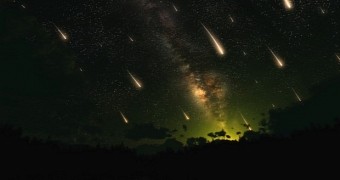The Perseid meteor shower happens each summer when our planet moves through the stream of debris left behind by comet Swift-Tuttle, discovered by astronomers back in 1862 and estimated to have an orbital period of 133 years.
The Perseid meteor shower, visible from the Northern Hemisphere, usually begins in late July and lasts until the end of August. This year, the first few meteors were documented around July 19 and NASA astronomers say their siblings will streak across the sky until August 24.
As for when the shower will reach its peak, this will happen on August 13, at 1 a.m. PT / 4 a.m. ET. Look up then, and if you're lucky, you'll get to see nearly 70 meteors light up the night sky. True, you'll sacrifice a few hours of sleep, but it will be well worth it.
In case you were wondering, the Perseid shower is called by this name because, when they appear, the meteors seem to originate from the constellation of Perseus in the northern sky.
Now, if you really want to play the space explorer, yet another brilliant opportunity will present itself this month: all the planets in the Solar System, including a few who were first labeled planets and then demoted, will too be visible.
Check out the NASA video below for tips on when and where to look for them, and brace yourselves for a glorious month of gorgeous cosmic displays.

 14 DAY TRIAL //
14 DAY TRIAL // 